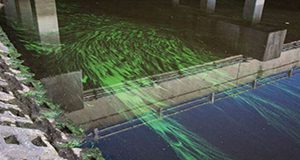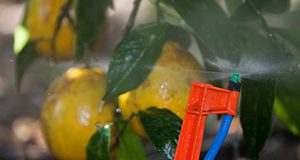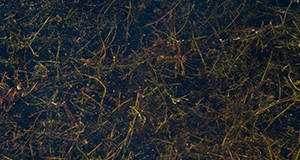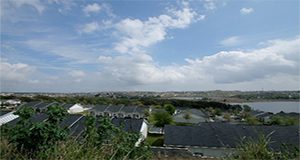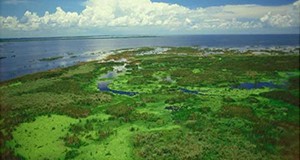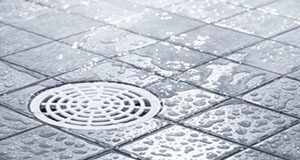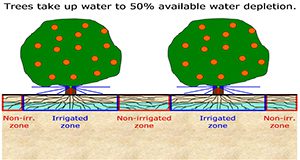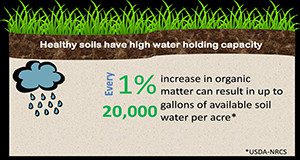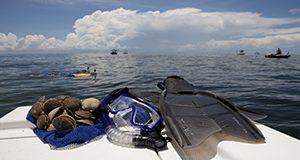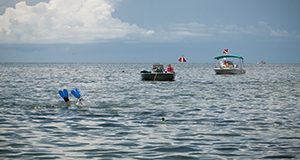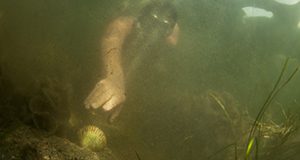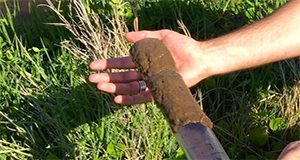Microscopic algae in oceans and inland waters sometimes grow to excessive levels called “blooms.” Warmer water temperatures and increased nutrient levels exacerbate blooms, and when nutrients are high, temperature increases of just a few degrees cause exponential increases of algae and blooms. This 4-page fact sheet written by Karl Havens and published by the Florida Sea Grant College Program and UF/IFAS Extension explains why algal blooms can be harmful and provides advice for communities seeking to reduce nutrient levels in their lakes, streams, and other bodies of water. In a warmer future, harmful algal blooms will be much more challenging to control than they are today.
http://edis.ifas.ufl.edu/sg153
Category: Water
Handbook of Florida Water Regulation: 2016 Florida Water Bill
This handbook is designed to provide an accurate, current, and authoritative summary of the principal federal and state laws that directly or indirectly relate to agriculture. Written by Tatiana Borisova, Michael T. Olexa, and Jarrett Davis and published by the UF/IFAS Food and Resource Economics Department, this chapter of the handbook provides a basic overview of the Florida Water Bill.
http://edis.ifas.ufl.edu/fe1018
Handbook of Florida Water Regulation: Florida Springs and Aquifer Protection Act
This handbook is designed to provide an accurate, current, and authoritative summary of the principal federal and state laws that directly or indirectly relate to agriculture. Written by Tatiana Borisova, Michael T. Olexa, and Jarrett Davis and published by the UF/IFAS Food and Resource Economics Department, this chapter of the handbook provides a basic overview of the Florida Springs and Aquifer Protection Act.
http://edis.ifas.ufl.edu/fe1019
Efficacy of Herbicide Active Ingredients Against Aquatic Weeds
Weed control is often a critical component of aquatic vegetation management in Florida waters. While physical, mechanical, and biological controls are utilized where they are feasible, herbicides are the primary tool used to control many troublesome species. This document answers some common questions and provides efficacy information for all herbicide active ingredients labeled for aquatic use in Florida. Written by S. F. Enloe, M. D. Netherland, W. Haller, and K. Langeland, and published by the UF/IFAS Agronomy Department, revised February 2018.
http://edis.ifas.ufl.edu/ag262
How Do Floridians Perceive Their Role in Protecting Water Quality and Quantity Through Landscape Practices?
Florida is faced with challenges in protecting both water quality and quantity; the state’s incredible number of home landscapes can positively or negatively impact water depending on how landscapes are managed. In 2016, Florida residents with irrigated landscapes were surveyed in order to create more effective Extension programs regarding landscape best management practices. This 4-page document discusses the results of this survey. Written by Laura A. Sanagorski Warner, Alexa J. Lamm, and Anil Kumar Chaudhary and published by the UF/IFAS Department of Agricultural Education and Communication, January 2018.
http://edis.ifas.ufl.edu/wc293
Handbook of Florida Water Regulation: Soil and Water Conservation Districts
This 2-page fact sheet written by Michael T. Olexa, Tatiana Borisova, and Jarrett Davis and published by the UF/IFAS Food and Resource Economics Department is part of a handbook designed to provide an accurate, current, and authoritative summary of the principal federal and Florida state laws that govern agriculture. This chapter provides an overview of soil and water conservation districts (SWCDs), explains their purpose and structure, and describes some of the agency partnerships SWCDs make.
edis.ifas.ufl.edu/fe1017
Understanding Good Irrigation and Fertilization Behaviors Among Households Using Landscape Design Features
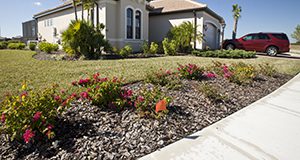
With increasing concerns over water resources in Florida, Extension can target households with irrigated landscapes to encourage practices that protect water quality and quantity. This document compares the water conservation education needs of different Florida household subgroups. Written by Anil Kumar Chaudhary and Laura A. Warner and published by the UF/IFAS Department of Agricultural Education and Communication, January 2018.
http://edis.ifas.ufl.edu/wc292
Communicating with Extension Clients about Water
Water impacts Florida’s tourism, agriculture, retail, and real estate development industries, all of which significantly contribute to Florida’s economy. Enhancing and protecting water quantity, quality, and supply is of ever-increasing importance to UF/IFAS Extension. This four-page document will provide an overview of how to communicate with Florida residents about water, including information about their preferred communication method and what water-related topics are of interest to Florida residents. Written by Alexa J. Lamm, Phillip Thomas Stokes, and Caroline G. Roper, and published by UF’s Agricultural Education and Communication Department, September 2017.
http://edis.ifas.ufl.edu/wc165
Microirrigation for Home Landscapes
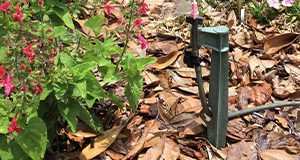 Microirrigation is a way to water plants using low pressure and low flowrates (usually 15 psi or less and 60 gph or less). Microirrigation systems can be easy to install above, on, or below the soil or mulch in landscape beds and are inexpensive to purchase. This 3-page fact sheet discusses types of microirrigation systems, benefits, design and installation, and maintenance. Written by Anne Yasalonis and Michael Dukes, and published by the UF/IFAS Department of Agricultural and Biological Engineering, October 2017.
Microirrigation is a way to water plants using low pressure and low flowrates (usually 15 psi or less and 60 gph or less). Microirrigation systems can be easy to install above, on, or below the soil or mulch in landscape beds and are inexpensive to purchase. This 3-page fact sheet discusses types of microirrigation systems, benefits, design and installation, and maintenance. Written by Anne Yasalonis and Michael Dukes, and published by the UF/IFAS Department of Agricultural and Biological Engineering, October 2017.
http://edis.ifas.ufl.edu/ae524
Irrigation Management of HLB-Affected Trees
Water is a limiting factor in Florida citrus production due to non-uniform rainfall distribution and the low water-holding capacity of our sandy soils. Because periods of low rainfall coincide with critical stages of citrus production, additional irrigation is necessary to reduce the negative effects of water stress. This 6-page document covers recent findings on water use of trees affected by citrus greening and the impact this would have on irrigation management considerations. Written by Davie Kadyampakeni, Kelly Morgan, Mongi Zekri, Rhuanito Ferrarezi, Arnold Schumann, and Thomas A. Obreza and published by the UF/IFAS Department of Soil and Water Sciences, October 2017.
http://edis.ifas.ufl.edu/ss659
Raising Soil Organic Matter Content to Improve Water Holding Capacity
Just like a sponge, soils with high organic matter (OM) can absorb and hold water during rainfall events and deliver it to plants during dry spells. Water is increasingly becoming the most limited natural resource supporting agriculture, but growers can improve their water storage capacity by raising their soil’s OM content. This 5-page fact sheet demonstrates how soil OM content can help increase water holding capacity of soils and describes the laboratory procedure to measure WHC. Written by Jehangir H. Bhadha, Jay M. Capasso, Raju Khatiwada, Stewart Swanson, and Christopher LaBorde, and published by the UF/IFAS Department of Soil and Water Sciences, October 2017.
http://edis.ifas.ufl.edu/SS661
Citrus Irrigation Management
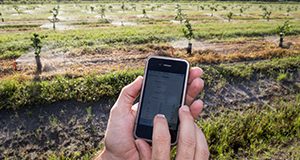 The chapter on irrigation management of citrus is largely taken from guidelines provided in SL253 on trees prior to Huanglongbing (HLB) prevalent conditions. A section has been added to cover recent findings on water use of trees affected by HLB and the impact this would have on the irrigation management considerations. This 6-page fact sheet discusses water supply, allowable soil water depletion, irrigation scheduling, soil moisture measurement, water budgeting, smartphone apps, irrigation strategies to improve nutrient uptake and reduce leaching, and irrigation management considerations for HLB-affected trees. Written by Davie Kadyampakeni, Kelly Morgan, Mongi Zekri, Rhuanito Ferrarezi, Arnold Schumann, and Thomas Obreza, and published by the UF/IFAS Soil and Water Sciences Department, September 2017.
The chapter on irrigation management of citrus is largely taken from guidelines provided in SL253 on trees prior to Huanglongbing (HLB) prevalent conditions. A section has been added to cover recent findings on water use of trees affected by HLB and the impact this would have on the irrigation management considerations. This 6-page fact sheet discusses water supply, allowable soil water depletion, irrigation scheduling, soil moisture measurement, water budgeting, smartphone apps, irrigation strategies to improve nutrient uptake and reduce leaching, and irrigation management considerations for HLB-affected trees. Written by Davie Kadyampakeni, Kelly Morgan, Mongi Zekri, Rhuanito Ferrarezi, Arnold Schumann, and Thomas Obreza, and published by the UF/IFAS Soil and Water Sciences Department, September 2017.
http://edis.ifas.ufl.edu/ss660
What Is the ENSO Climatology Tool?
 On a global scale, periodic anomalies in sea surface temperatures coupled with shifts in atmospheric pressure and winds, such as those associated with the El Niño Southern Oscillation (ENSO), can have profound impacts on weather conditions. ENSO affects atmospheric circulation patterns well into the midlatitudes and is the leading driver of seasonal climate variability in the United States. Tremendous advances have been made in predicting the occurrence of ENSO events with confidence three to six months in advance. This 5-page fact sheet discusses the ENSO climatology tool as well as possible challenges. Written by Caroline Staub, Clyde Fraisse, Eduardo Gelcer, and Daniel Dourte, and published by the UF Department of Agricultural and Biological Engineering, March 2017.
On a global scale, periodic anomalies in sea surface temperatures coupled with shifts in atmospheric pressure and winds, such as those associated with the El Niño Southern Oscillation (ENSO), can have profound impacts on weather conditions. ENSO affects atmospheric circulation patterns well into the midlatitudes and is the leading driver of seasonal climate variability in the United States. Tremendous advances have been made in predicting the occurrence of ENSO events with confidence three to six months in advance. This 5-page fact sheet discusses the ENSO climatology tool as well as possible challenges. Written by Caroline Staub, Clyde Fraisse, Eduardo Gelcer, and Daniel Dourte, and published by the UF Department of Agricultural and Biological Engineering, March 2017.
http://edis.ifas.ufl.edu/ae522
Residents' Perceived Landscape Benefits Can Help Extension Promote Good Landscape Management Practices
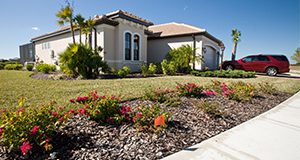
Households can help conserve and protect water resources through irrigation and fertilizer best practices without compromising the quality of their landscape. UF/IFAS Extension, along with Extension services across the country, conducts programs to protect water quality and quantity by educating communities and individuals about research-based landscape practices. This four-page fact sheet describes the results of a survey that can help Extension promote good landscape management practices. Written by Laura A. Warner, Amanda D. Ali, and Anil Kumar Chaudhary and published by the Department of Agricultural Education and Communication.
http://edis.ifas.ufl.edu/wc282
Recreational Harvesting of the Florida Bay Scallop: Citrus County
This publication includes a full-color map identifying access routes to the boat ramps and marinas in Citrus County near Homosassa and Crystal River, plus the latest information on scallops and scalloping, the recommended equipment you will want to bring, and a few tasty recipes for preparing Florida’s best summertime catch. Written by Savanna Barry and published by the Florida Sea Grant College Program.
http://edis.ifas.ufl.edu/sg147
Recreational Harvesting of the Florida Bay Scallop: Steinhatchee and Keaton Beach areas, Taylor County
A full-color map identifying access routes to the boat ramps and marinas in southern Taylor County near Steinhatchee and Keaton Beach, plus the latest information on scallops and scalloping, the recommended equipment you will want to bring, and a few tasty recipes for preparing Florida’s best summertime catch. Written by Victor Blanco and published by the Florida Sea Grant College Program.
http://edis.ifas.ufl.edu/sg146
Recreational Harvest of the Florida Bay Scallop: Hernando County
A full-color map identifying access routes to the boat ramps and marinas in Hernando County, plus the latest information on scallops and scalloping, the recommended equipment you will want to bring, and a few tasty recipes for preparing Florida’s best summertime catch. Written by Brittany Hall-Scharf and published by the Florida Sea Grant College Program.
http://edis.ifas.ufl.edu/sg148
Collaborative Planning for the Future of Water Resources in Central Florida: Central Florida Water Initiative
Rules and regulations that govern our use of natural resources, specifically water, are changing. Over the past 80 years, Florida’s population increased four times, from approximately 5 million to more than 20 million people. With this population increase, water needs have also increased. Forward-looking communities think about the future of their towns, counties, or the state as they work on redefining regulations to meet future water needs without harming our springs, lakes, rivers, and estuaries. This 4-page fact sheet written by James Fletcher and Tatiana Borisova and published by the Food and Resource Economics Department discusses the Central Florida Water Initiative, which deals with advancing water-use and water-resource-protection strategies for Orlando and its vicinity.
http://edis.ifas.ufl.edu/fe1012
A Beginner's Guide to Water Management—Muck: Causes and Corrective Actions
Muck is both the popular and the scientific term for the material found on the bottom of ponds and lakes. Its “oozy” feel and rotten egg smell can be offensive, and it provides habitat for problem insects like blind midges. It may seem simple: get rid of the muck; get rid of the problems. However, there is more to this muck-raking story. Excessive amounts of muck in the wrong places certainly can cause problems, but just enough muck in the right places is essential for a healthy lake that supports diverse wildlife and fishing. Learn all about muck and what to do about it in this 13-page fact sheet written by Mark V. Hoyer, Daniel E. Canfield Jr. and Mark Brenner and published by the School of Forest Resources and Conservation Program in Fisheries and Aquatic Sciences.
edis.ifas.ufl.edu/fa200
Florida Fertilizer Usage Statistics
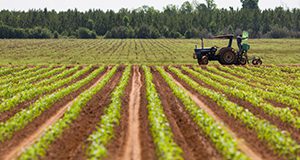
Nutrient applications are often required to meet Florida’s demand for agricultural and horticultural commodities, but often those applications occur in close proximity to water bodies. In order for scientists, policy makers, and citizens to make decisions regarding nutrient issues in Florida, it is important to first understand which markets contribute to Florida’s fertilizer consumption. This three-page fact sheet explains Florida’s fertilizer usage statistics. Written by T.W.Shaddox and published by the Environmental Horticulture Department.
http://edis.ifas.ufl.edu/ep541
